
PC, Switch, Mobile
It’s generally a good sign about a game when I put off writing about it for a week because I just want to keep on playing it. That, and I’m enormously lazy. Tents And Trees has occupied my right screen for said week, while I’ve burned through two seasons of Is It Cake? and various other shows on the left. It’s one of those enticing puzzle games where you’re never scratching your head, but always satisfied in clicking away to a solution.
One day I’ll draw out the giant spiderweb guide to puzzle gaming, where I’ll invent category names for all the niche types, and then when reviewing such games just stand in front of it and wave a pointer. But until then, I will make do with wayward words. Tents And Trees – based on the logic puzzle known as “Tents” – while only vaguely overlapping in technique, fits into that category with a Picross puzzle: there are techniques and rules to learn to discern while tiles to highlight, which to replace, but once mastered it’s just a case of methodically ploughing through each puzzle. Which is, I should say, one of my favourite ways to spend my time.
However, once understood, such games don’t offer the complexity and constant demand on your imagination that comes with games like Tametsi and Polimines 2. Instead they just get bigger, and more time-consuming. It’s a useful distinction, and not a criticism of either approach.
In Tents And Trees, like Tents if you’ve ever played a variant of it, you have a grid of tiles, numbers outside the rows and columns, and a smattering of trees all over the grid. Every tree needs a single tent in an orthogonally adjacent tile, and no tent can have another tent in the eight tiles surrounding it. The numbers tell you how many tents there are in that row or column. And that’s your lot.
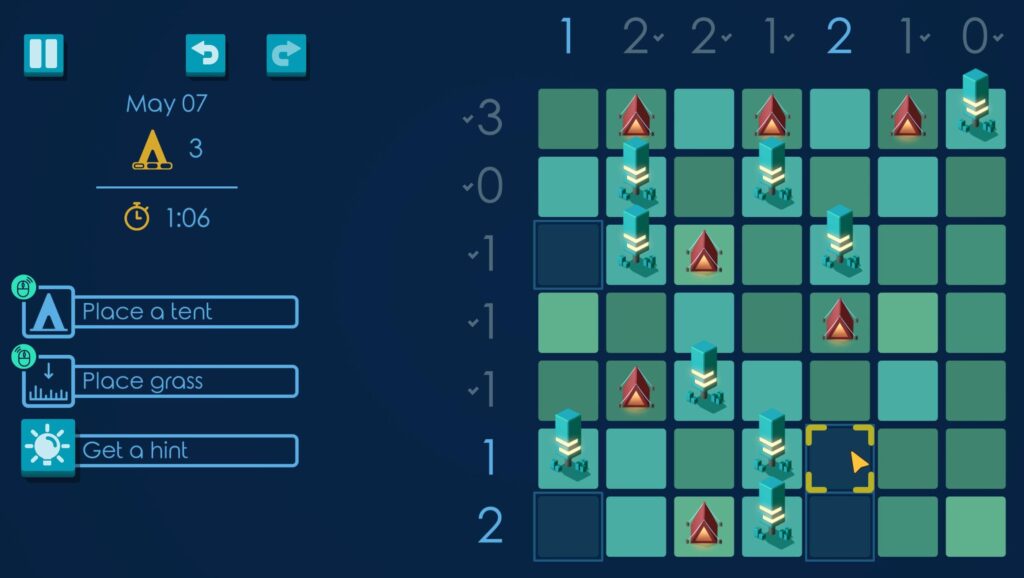
There are approximately 59 billion levels to the game, grouped in bundles of grid size, with a basic, hard, and then “missing numbers” set of puzzles for each. And yet, despite the huge numbers of puzzles, it’s not a haphazard collection. I’ve been really impressed by how the game nudges you toward noticing new patterns, new techniques, and then follows up by a series of puzzles that depend on using these – all without a single prompt, just pure puzzle design.
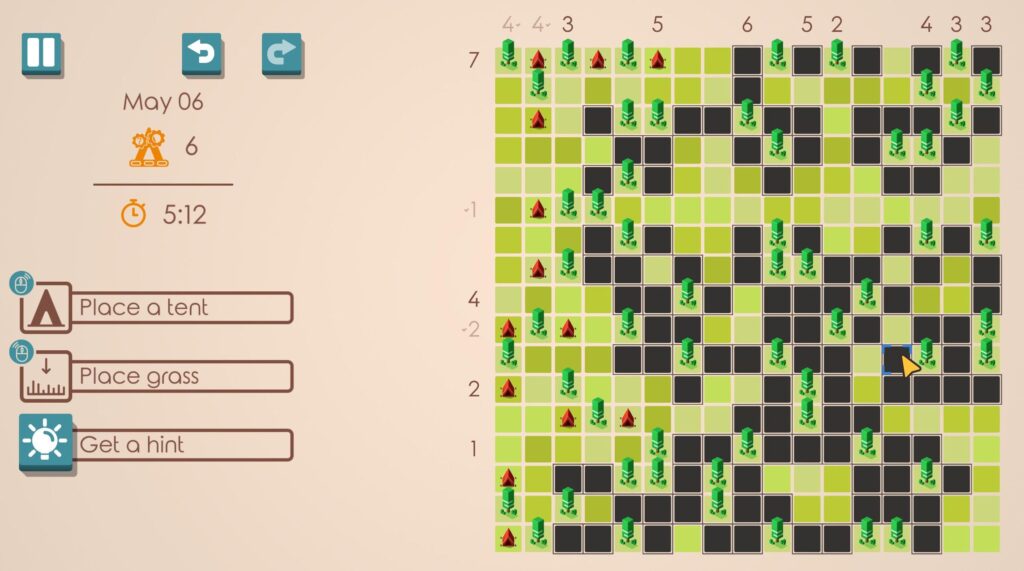
By the time you’re on 8×8 grids, you’ve learned pretty much everything you’re going to need, so navigating a 12×12 becomes a case of scale rather than challenge. But it’s also a really fun thing to just pick away at while listening to a podcast, or browsing YouTube – second-screen entertainment stuff. And as much as I tried, I just kept playing it instead of getting around to writing about it. I mean, it’s literally sitting behind this browser window, peeking out the sides, trying to lure me back in right now.
All Buried Treasure articles are funded by Patreon backers. If you want to see more reviews of great indie games, please consider backing this project.
83




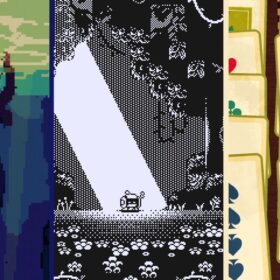

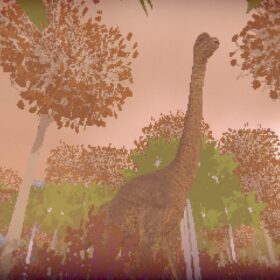

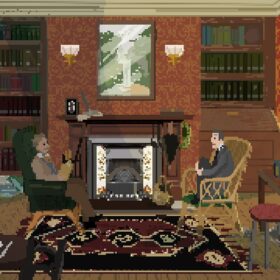
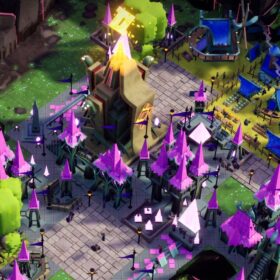
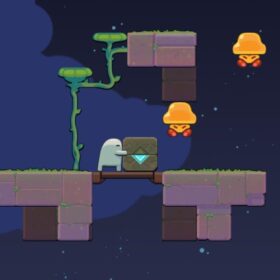


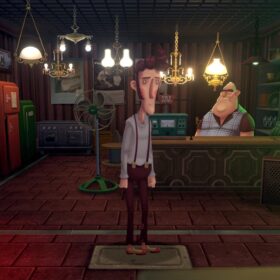
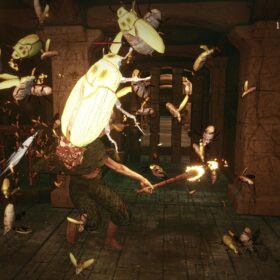

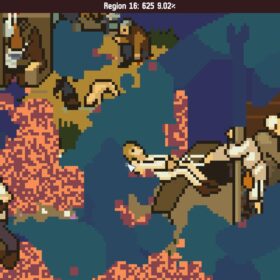
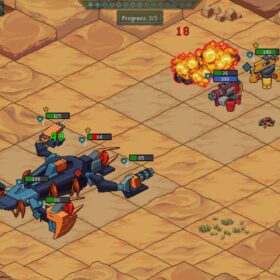



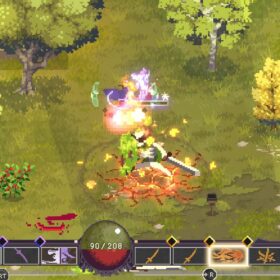
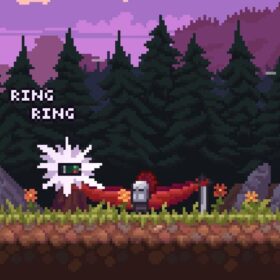

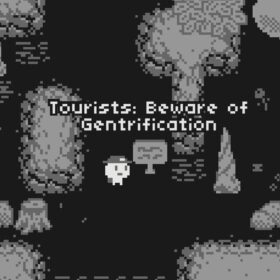


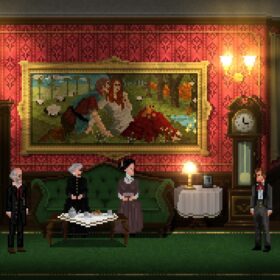

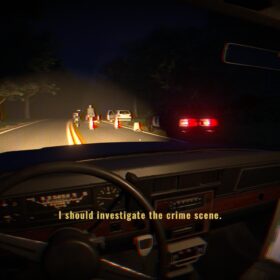
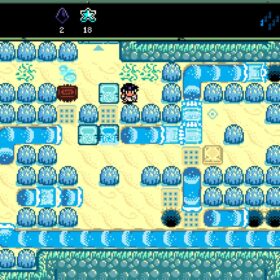
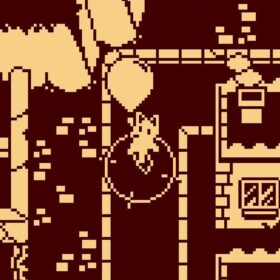
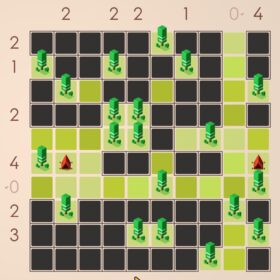

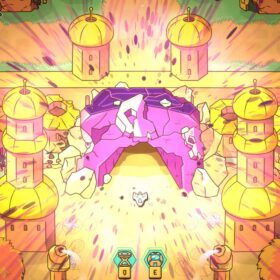



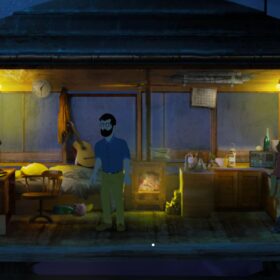

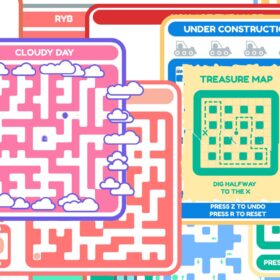

“…there are techniques and rules to learn to discern while tiles to highlight, which to replace, but once mastered it’s just a case of methodically ploughing through each puzzle. Which is, I should say, one of my favourite ways to spend my time.”
Are you familiar with Simon Tatham’s Puzzles? It is an open-source collection that has a huge number of such puzzles (including Tents & Trees), and can available on any open platform. Is it so good! I play a little every day.
Here’s an HTML port!
Thanks for the link. Any particular game on that site you like?
Undead (aka Haunted Mirror Maze) is a fun one. I think there’s a version of it on Steam too, but I’ve forgotten the name.
I love deductive logic puzzles and this game sucked me in right away – never seen this kind of puzzle before. It’s the perfect palate cleanser after one of those murder simulators. The review captures how simple and fun the game is.
Thanks for the link to Simon Tatham’s version! It lacks the shiny polish, like being able to clear a whole row, use individual right or left click for tent or grass, or get a hint when you’re learning, but you’re right, it is the same game!